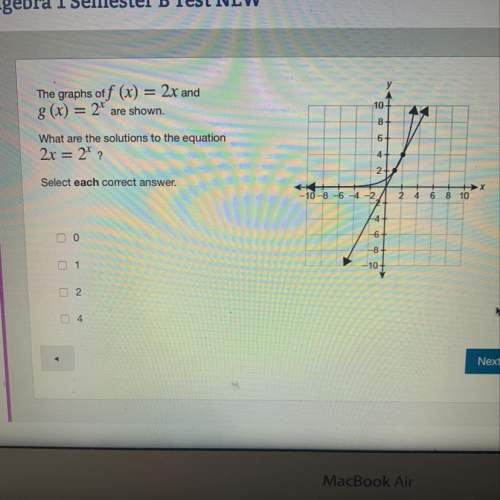
Mathematics, 15.02.2022 02:00 janny48
Consider the following sets of sample data:
A: $29,900, $29,200, $26,100, $39,300, $24,200, $37,300, $34,300, $29,700, $35,100, $21,100, $38,800, $25,100, $27,200, $29,100
B: 3.42, 3.53, 4.41, 3.95, 3.18, 4.85, 3.13, 4.23,3.53, 4.72, 3.24
Step 1 of 2: For each of the above sets of sample data, calculate the coefficient of variation, CV. Round to one decimal place.

Answers: 2


Another question on Mathematics

Mathematics, 21.06.2019 18:00
Solve this system of equations. 12x − 18y = 27 4x − 6y = 10
Answers: 1

Mathematics, 21.06.2019 18:20
The number if marbles of different colors stored in a hat is listed below: 4 red marbles 10 green marbles 7 blue marbles. without looking in the hat, dan takes out a marble at random. he replaces the marble and then takes out another marble from the hat. what is the probability that dan takes out a blue marble in both draws?
Answers: 1

Mathematics, 21.06.2019 18:30
[10 points, algebra 2-simplifying complex fractions]according to my answer key the restrictions are -1 and 4. but why not positive 1?
Answers: 1

Mathematics, 21.06.2019 19:30
Hi, can anyone show me how to do this problem? 100 points for this. in advance
Answers: 2
You know the right answer?
Consider the following sets of sample data:
A: $29,900, $29,200, $26,100, $39,300, $24,200, $37,30...
Questions


Biology, 08.01.2020 15:31

Mathematics, 08.01.2020 15:31




English, 08.01.2020 15:31



History, 08.01.2020 15:31

World Languages, 08.01.2020 15:31


Advanced Placement (AP), 08.01.2020 15:31


Geography, 08.01.2020 15:31

Biology, 08.01.2020 15:31

Mathematics, 08.01.2020 15:31

Mathematics, 08.01.2020 15:31


Mathematics, 08.01.2020 15:31




